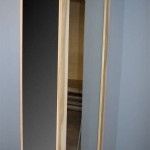Screen Mirroring: Connecting Your iPhone to a Samsung TV
Screen mirroring, the process of wirelessly displaying the content of a mobile device onto a larger screen, has become a prevalent feature for both personal and professional use. This capability allows users to share photos, videos, presentations, and even play mobile games on a more expansive display. For owners of both iPhones and Samsung TVs, understanding how to establish a screen mirroring connection is essential for maximizing the utility of both devices. This article provides a detailed guide on the various methods and considerations for screen mirroring between an iPhone and a Samsung TV.
Several methods exist to facilitate screen mirroring between an iPhone and a Samsung TV. These methods vary in terms of complexity, cost, and reliance on specific technologies. The most common approaches involve utilizing AirPlay 2 (if supported by the Samsung TV), using a third-party screen mirroring application, or employing an HDMI adapter to establish a wired connection. Each method presents its own set of advantages and disadvantages, requiring careful evaluation based on individual needs and technical capabilities.
AirPlay 2: Direct Integration for Apple Users
AirPlay 2, developed by Apple, provides a seamless method for screen mirroring and audio streaming between Apple devices and compatible smart TVs. Many newer Samsung TV models are equipped with AirPlay 2 support, allowing iPhone users to directly mirror their device's screen without the need for additional hardware or software. To determine if a Samsung TV supports AirPlay 2, consult the TV's specifications or navigate to the settings menu and search for "AirPlay."
To initiate screen mirroring using AirPlay 2, ensure that both the iPhone and the Samsung TV are connected to the same Wi-Fi network. On the iPhone, open the Control Center by swiping down from the top-right corner of the screen (or swiping up from the bottom edge on older iPhone models). Locate and tap the "Screen Mirroring" icon. A list of available AirPlay 2-compatible devices will appear. Select the desired Samsung TV from the list.
Upon selecting the Samsung TV, a passcode may appear on the TV screen. Enter this passcode on the iPhone to establish the connection. Once connected, the iPhone's screen will be mirrored on the Samsung TV. The user can then navigate through apps, play videos, or present content directly from their iPhone, with the display replicated on the larger screen. To stop screen mirroring, return to the Control Center, tap the "Screen Mirroring" icon, and select "Stop Mirroring."
AirPlay 2 offers several advantages, including its ease of use and direct integration with Apple devices. It supports both screen mirroring and audio streaming, allowing users to enjoy their iPhone's content on a larger display with enhanced audio quality. Furthermore, AirPlay 2 provides relatively low latency, resulting in a responsive mirroring experience. However, AirPlay 2 is only compatible with Samsung TVs that specifically support the feature.
Third-Party Screen Mirroring Applications
If a Samsung TV does not support AirPlay 2, alternative screen mirroring solutions are available through third-party applications. Numerous screen mirroring apps are available on the App Store, offering varying degrees of functionality and compatibility. These applications typically work by establishing a wireless connection between the iPhone and the Samsung TV via Wi-Fi Direct or a similar protocol.
Examples of popular screen mirroring applications include "MirrorMeister," "Reflector," and "AirBeamTV." These applications often require installing a corresponding application on the Samsung TV. The installation process usually involves accessing the Samsung Smart Hub and searching for the specific app. Once both the iPhone and the Samsung TV have the respective applications installed, they can be connected following the instructions provided by the app.
The connection process generally involves launching the application on both devices and allowing them to discover each other on the network. The iPhone app will typically display a list of available devices, and the user can select the Samsung TV to initiate the mirroring process. As with AirPlay 2, a passcode may be required to authenticate the connection.
Third-party screen mirroring applications offer the advantage of compatibility with a wider range of Samsung TV models, including those that do not support AirPlay 2. However, the performance of these applications can vary depending on the quality of the Wi-Fi network and the specific app being used. Latency may be higher compared to AirPlay 2, and some applications may require a paid subscription for full functionality or to remove watermarks.
Wired Connection: Utilizing an HDMI Adapter
For situations where a wireless connection is unreliable or unavailable, a wired connection using an HDMI adapter provides a stable and direct method for screen mirroring. This approach involves connecting the iPhone to the Samsung TV via an HDMI cable, utilizing an Apple Lightning Digital AV Adapter or a USB-C Digital AV Multiport Adapter, depending on the iPhone model.
The Apple Lightning Digital AV Adapter features a Lightning port for connecting to the iPhone and an HDMI port for connecting to the TV. Similarly, the USB-C Digital AV Multiport Adapter features a USB-C port for connecting to newer iPhone models (specifically, the iPhone 15 series) and an HDMI port. These adapters also typically include a Lightning or USB-C port for charging the iPhone while it is connected to the TV.
To establish a wired connection, connect the adapter to the iPhone's Lightning or USB-C port, then connect an HDMI cable from the adapter to an available HDMI port on the Samsung TV. Select the corresponding HDMI input on the TV using the TV's remote control. The iPhone's screen will then be displayed on the Samsung TV. This method provides a direct and reliable connection, eliminating the potential for Wi-Fi interference or latency issues.
The primary advantage of using an HDMI adapter is its stability and reliability. It provides a consistent connection without relying on Wi-Fi, which can be particularly useful for presenting important presentations or watching videos without interruption. However, this method requires purchasing an adapter and an HDMI cable, adding to the overall cost. Additionally, the mobility of the iPhone is limited by the length of the HDMI cable.
Regardless of the method chosen, several factors can influence the quality and stability of the screen mirroring connection. A strong and stable Wi-Fi network is crucial for wireless screen mirroring. Obstacles such as walls and other electronic devices can interfere with the Wi-Fi signal, leading to connection issues or reduced performance. Ensure that the iPhone and the Samsung TV are located within close proximity to the Wi-Fi router for optimal signal strength.
Another consideration is the resolution and aspect ratio of the content being mirrored. Displaying high-resolution content, such as 4K videos, may require a more powerful Wi-Fi network or a wired connection to avoid buffering or lag. Adjusting the resolution settings on the iPhone or within the screen mirroring application can help to improve performance. Similarly, ensure that the aspect ratio settings on both the iPhone and the Samsung TV are correctly configured to avoid distortion or black bars around the mirrored image.
Furthermore, software updates can impact the functionality of screen mirroring. Ensure that both the iPhone and the Samsung TV are running the latest versions of their respective operating systems and applications. Updates often include bug fixes and performance improvements that can enhance the screen mirroring experience. Regularly checking for updates and installing them promptly can help to prevent compatibility issues and ensure optimal performance.
Beyond these technical considerations, user experience is also an important factor. Consider the intended use case for screen mirroring when selecting a method. For casual use, such as sharing photos and videos with friends and family, AirPlay 2 or a third-party application may suffice. For more demanding applications, such as presenting professional presentations or playing graphically intensive games, a wired connection using an HDMI adapter may be a better choice. Experimenting with different methods and configurations can help to determine the best solution for specific needs.

Screen Mirroring To Your Samsung Tv

How To Screen Mirroring Iphone Samsung Tv

Latest Airbeamtv App Lets You Mirror Your Iphone Directly To A Samsung Television 9to5mac

4 Best Ways To Screen Mirror From Iphone Samsung Tv Guiding Tech

How To Stream From An Iphone Using Airplay 2

How To Stream From An Iphone Using Airplay 2

Effective How To Mirror Iphone Samsung Tv Airdroid

4 Best Ways To Screen Mirror From Iphone Samsung Tv Guiding Tech

4 Easy Ways To Mirror Iphone Samsung Tv For Free

Top 4 Ways To Screen Mirror Iphone Samsung Tv 2024








